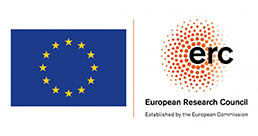About
Arquitectura Aqui is an output of the research projects ReARQ.IB
– Built Environment Knowledge for Resilient, Sustainable Communities:
Understanding Everyday Modern Architecture and Urban Design in the
Iberian Peninsula (1939-1985) (European
Research Council – ERC Starting Grant 949686), hosted by DINÂMIA’CET – Centre for the Study of Socioeconomic Change and the Territory (Iscte – University Institute of Lisbon), and ArchNeed – The Architecture of Need: Community Facilities in Portugal (1945-1985) (Fundação
para a Ciência e a Tecnologia – PTDC/ART-DAQ/6510/2020), hosted by
CIDEHUS – Interdisciplinary Centre for History, Culture and Societies
(University of Évora). For more information see Credits tab.
WHAT IS ARQUITECTURA AQUI?
We all reside, work, study, convalesce and enjoy ourselves in buildings we know little about. If we have better knowledge, and if this is collectively built – by those who research the buildings’ history and architecture together with those who created and experience them – we might contribute to better informed decisions on which structures to maintain, reuse and replace. With improved knowledge, we will be able to make better decisions on how to update and perfect this collective-use heritage.
Today, as dwindling available resources, material and economic, must be rationally employed, repurposing and revalorising existing buildings is a priority over new built. These largely sturdy structures were the outcome of collective, community efforts across decades, expressing essential needs, and deserve to be better known to continue to serve all, with quality and dignity.
The initiative Arquitectura Aqui aims to support sustainable, resilient local communities with solid knowledge about the buildings and ensembles where our daily life unfolds.
THE FOCUS OF ARQUITECTURA AQUI
Arquitectura Aqui is interested in collective-use buildings and ensembles planned and built in Portugal and Spain between 1939 and 1985, following the parallel, shared history of the Iberian countries from dictatorship to democratic transition and European integration.
Our attention is drawn specifically to proximity structures devoted to
– Welfare and medical care (health centres, homes)
– General and social services (council facilities, community centres, market halls)
– Minimum-rent and emergency housing
– Security (fire and police stations)
– Education (schools, creches)
– Culture and leisure (museums, libraries, sports halls)
– Cooperative farming facilities
Originating in local and central initiatives, launched and supported by public and private entities with state technical support and funding, these structures often drew on non-governmental, philanthropic aid from foundations, groups and individuals with strong community links.
COLLECTIVELY-CREATED, SHARED KNOWLEDGE – How to participate?
Arquitectura Aqui integrates detailed information and critical thinking on such objects, key in potential management and transformation initiatives, while advancing scientific and historical knowledge on the architecture and urban design of Portugal and Spain and reinforcing the social relevance and pertinence of these fields.
This is an applied science initiative for community participation enabling a more sustainable and resilient built environment.
Our platform combines knowledge drawn from the archives with the memories and experiences of stakeholders, creators and users, testimony to generations of living histories, co-creating a new narrative, plural and shared, to empower appreciation, maintenance and change.
As the outcome of our team's encounters with institutional representatives, local groups and community members, we collect and make available in this platform a wide range of information, images and testimonies that enable us to construct, together, a novel history of these buildings and ensembles, present in the landscape, the everyday and the memories of their users.




